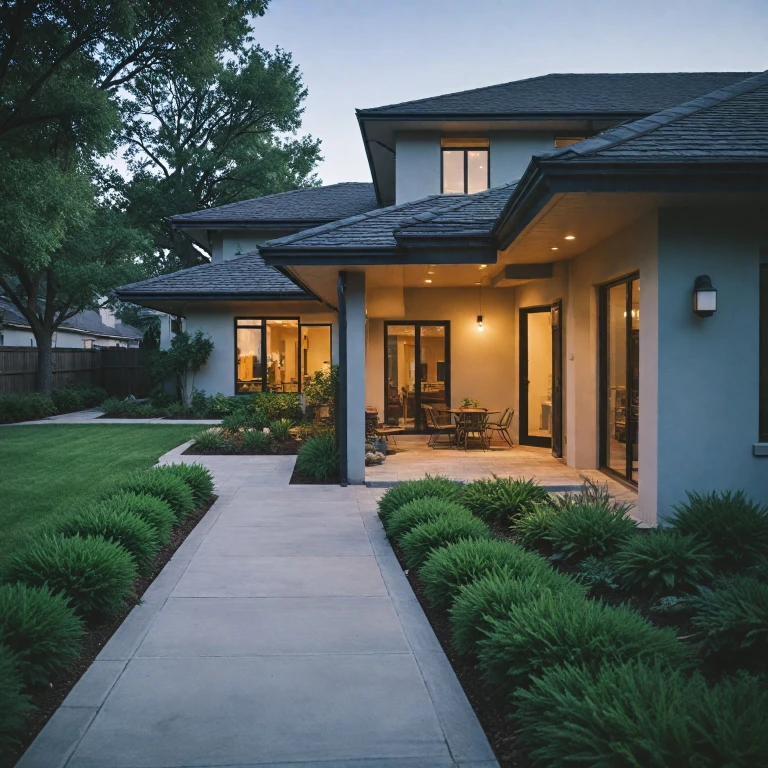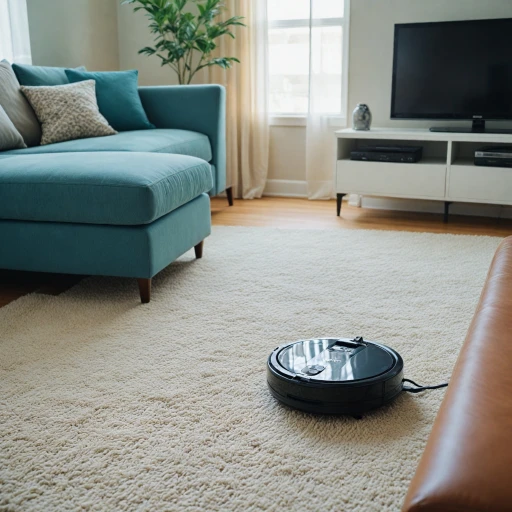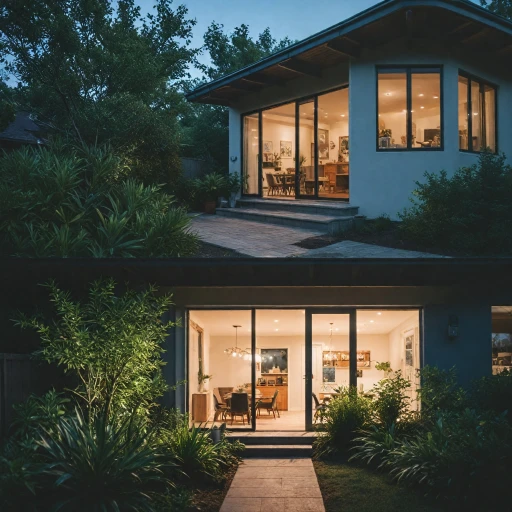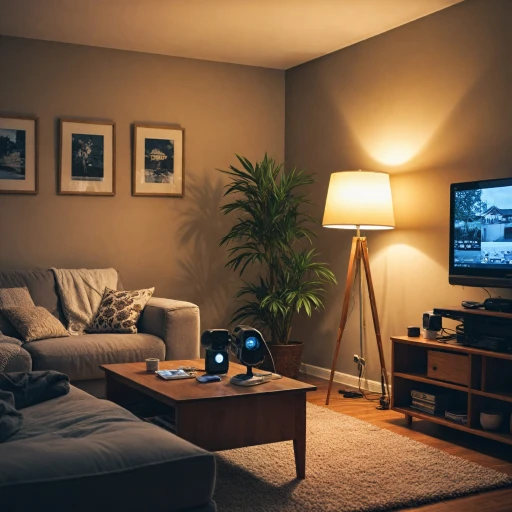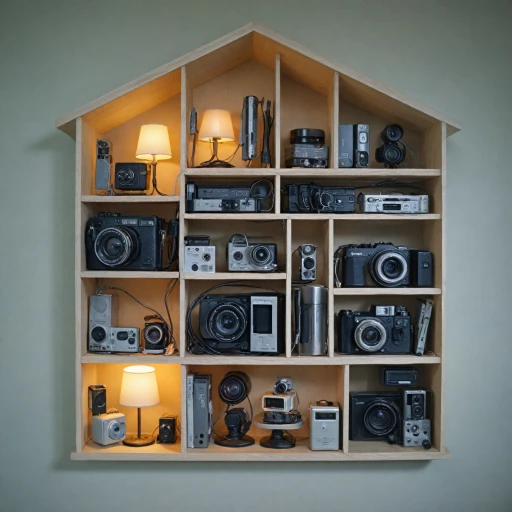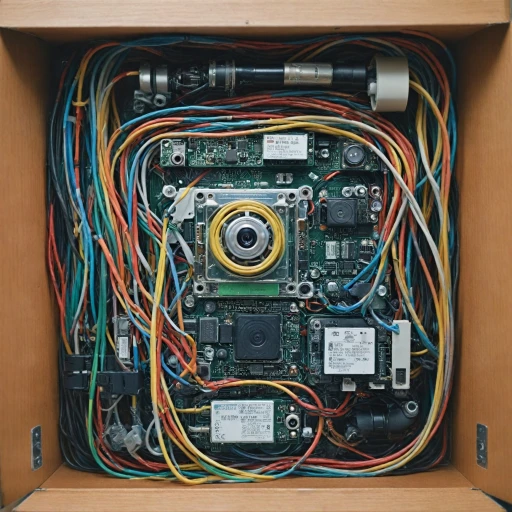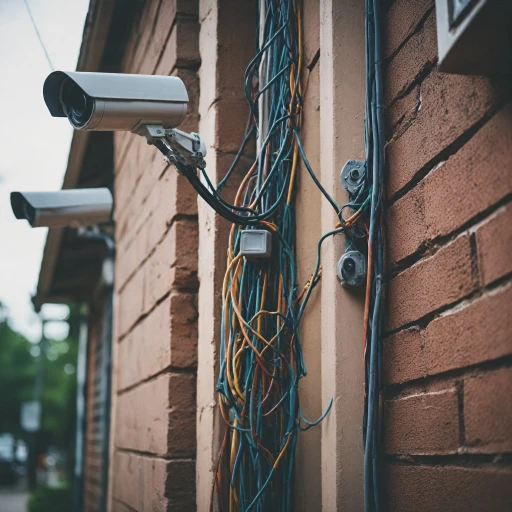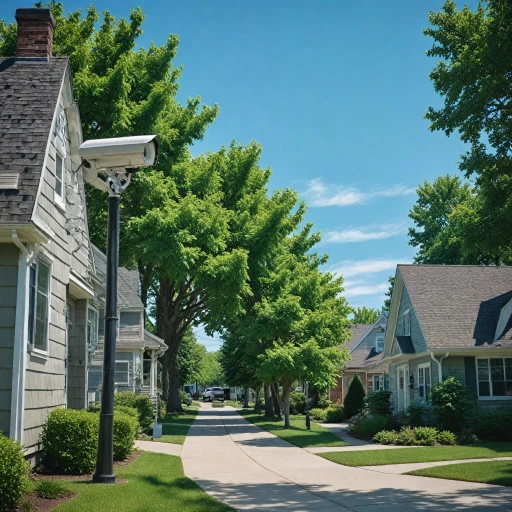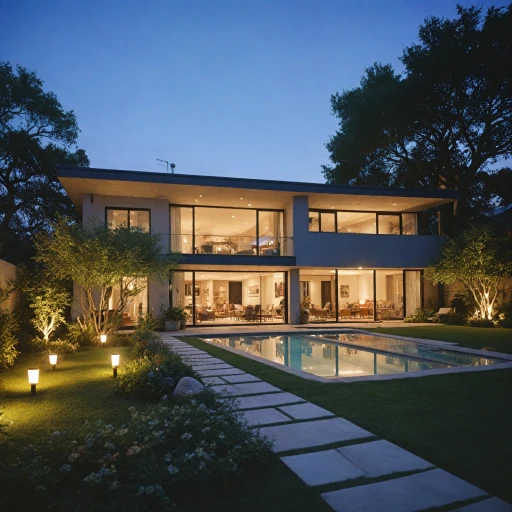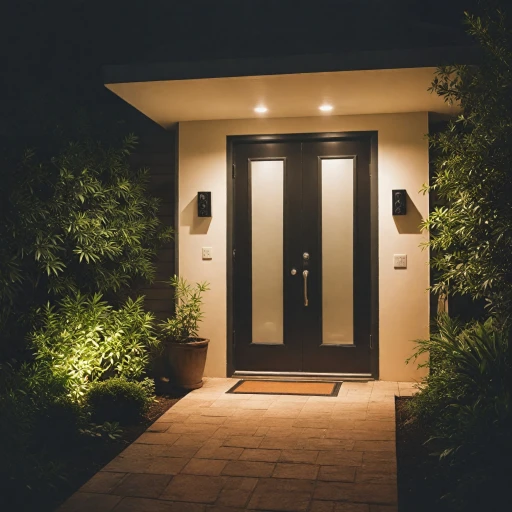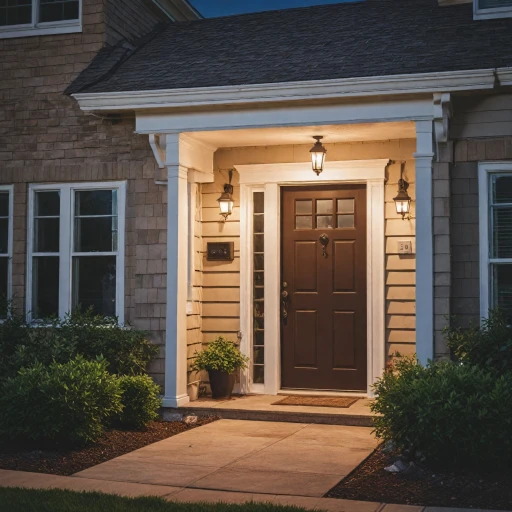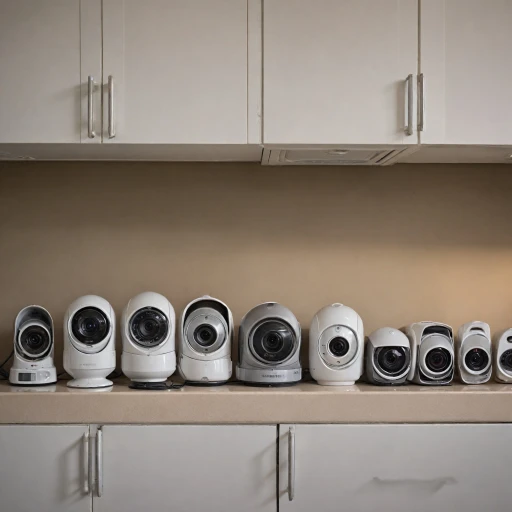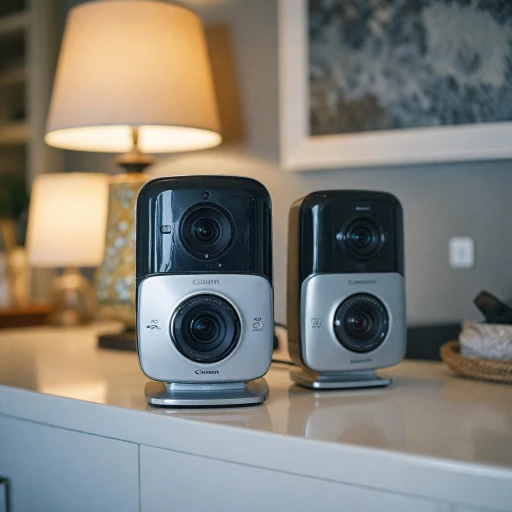
Understanding the 8-Camera Security System
Exploring the 8-Camera Security System
An 8-camera security system represents a robust solution for home surveillance. This configuration provides extensive coverage, allowing constant monitoring of different areas. Whether it's covering the perimeter of your property or keeping an eye on critical entry points, an 8-camera setup ensures comprehensive security. Here's what an 8-camera system typically encompasses:- DVR/NVR Options: Depending on your preference, you can opt for a DVR or NVR system. DVRs are cost-effective options that pair well with wired cameras, while NVRs offer enhanced video quality and flexibility, especially for IP cameras.
- Variety of Camera Types: The system may include bullet cameras for long-range visibility, and dome cameras offering a more discreet look. The selection is critical based on where you intend to install them.
- Audio Capabilities: Some systems come with built-in microphones in cameras, adding an extra layer of security through audio surveillance. This function can be beneficial in specific security scenarios.
- Night Vision and Detection Technology: Modern systems often include human detection features and night vision capabilities, enabling round-the-clock monitoring and motion-triggered alerts.
- Storage Solutions: A large hard drive is essential for storing video footage. Consider the capacity needed based on the resolution of the cameras and the number of days you wish to keep footage before it cycles out.
Key Features to Look for in an 8-Camera System
Essential Features in a Comprehensive Camera Setup
When shopping for an 8-camera security system, it’s essential to focus on key features that not only enhance the system's efficiency but also provide peace of mind. Whether it’s the high-definition quality of video capture or advanced human detection, these elements can elevate your experience.- Video Quality: High-resolution video is crucial for identifying details. Look for systems offering at least 1080p HD. This is vital for capturing clear and detailed footage should you need to review the footage for potential security breaches.
- Night Vision: Identify potential intruders even in the dark with effective night vision capabilities. Many camera systems now offer this feature integrated into their lens camera technology.
- Motion and Human Detection: Advanced detection features help reduce false alarms and ensure the system is triggered by actual events. This capability typically includes the differentiation between humans and other movements.
- Audio Capture: Cameras with built-in microphones can provide audio alongside video, offering comprehensive documentation of incidents. Consider systems where each camera supports audio.
- Storage Options: A reliable hard drive or cloud storage system is important. Decide between an NVR security or DVR security system depending on your preference for digital (NVR) or analog (DVR) footage recording. The chosen drive should support ample storage for archived footage.
- Types of Cameras: Choose between dome or bullet cameras based on your specific coverage needs and preferences; bullet cameras often offer longer range while dome cameras provide wider angles.
- Channel Flexibility: An 8-channel NVR or DVR provides the capability to monitor and record footage from multiple cameras simultaneously, ensuring expansive coverage across your property.
- Power over Ethernet (PoE): For those opting for wired systems, PoE simplifies the installation process by transmitting power and data through a single cable, reducing clutter and enhancing reliability.
Installation Tips for Optimal Coverage
Effective Setup for Comprehensive Security Coverage
In establishing a robust 8-camera security system, strategic installation is crucial for maximizing coverage and minimizing blind spots. Setting up your security cameras can be a daunting task, but with some practical guidance, you can ensure an optimal setup for comprehensive security.- Identify Vulnerable Spots: Start by assessing your property to identify potential security vulnerabilities. Entry points such as doors and windows, driveways, and dark corners are areas where cameras can be particularly effective.
- Camera Types and Positions: Choose between bullet cameras for focused monitoring and dome cameras for wider coverage. Position your lens camera to ensure clear visibility and coverage of the targeted areas.
- Optimal Height and Angles: Mount your security cameras at a height where they are out of reach to prevent tampering but low enough to capture clear images. A height of 8 to 10 feet is generally recommended for most environments.
- Light and Conditions: Consider the lighting conditions and adjust the cameras accordingly. For areas susceptible to low light, night vision-capable cameras will provide enhanced security even in the dark.
- Wired vs. Wireless Installation: While wired systems generally offer stability and consistent video quality, they require more complex installation due to wiring needs. On the other hand, wireless systems offer flexibility and easier installation but may be subject to interference.
Comparing Wired vs. Wireless Systems
Choosing Between Wired and Wireless Systems for Enhanced Security
When deciding on an 8-camera security system, a key consideration is whether to opt for wired or wireless systems. Each has its own advantages and potential drawbacks that may influence your choice depending on your specific needs and the layout of your property.
Wired Security Camera Systems
- Reliable Connection: Wired systems are less prone to interference compared to wireless setups. This makes them ideal for areas with tricky Wi-Fi connectivity, ensuring a stable video feed.
- Constant Power Supply: With no reliance on battery power, wired systems provide continuous operation without the need for frequent recharging or battery replacements.
- High-Quality Video and Audio: Often, wired setups, especially those using Ethernet or PoE (Power over Ethernet), can transmit higher quality video and audio signals. Consider options with NVR or DVR with adequate channels and capacity, to support your security requirements.
Wireless Security Systems
- Flexibility of Installation: A major selling point for wireless systems is their ease of installation without the need for extensive wiring. This can be particularly advantageous in areas where wired installations are not feasible.
- Remote Access and Integration: Many wireless security cameras offer seamless integration with smart home systems and apps for remote monitoring. This can include advanced features like human detection and night vision capabilities.
- Potential Interference: Keep in mind that wireless cameras are susceptible to interference from other devices operating on similar frequencies, which could affect the system’s effectiveness.
Ultimately, the choice between wired and wireless systems may also be influenced by budget considerations, as well as the complexity of the setup desired. For more insights into tailoring your security camera choice to specific needs, including optimizing with 4K options, further reading and resources can be invaluable.
Integrating with Smart Home Technology
Integrating with Smart Home Systems
With the rise of smart home technology, seamlessly integrating your security cameras into existing systems can elevate your home security environment. Smart integration allows for centralized control and efficient monitoring, making it easier to manage your camera system.
When selecting an 8-camera security system, consider those that offer compatibility with popular smart home hubs and devices. Look for features such as:
- Voice control: Systems that work with voice-activated assistants can be convenient. Consider security cameras that integrate with platforms such as Alexa, Google Assistant, or Apple HomeKit.
- Mobile app support: A user-friendly app allows you to view live footage, receive notifications, and control cameras remotely.
- Integration with other smart devices: Cameras that can sync with smart lights, locks, or alarms add an additional layer of security.
Moreover, a well-integrated system allows you to set up routines and automations. For instance, linking a dome security camera to your doorbell can trigger recordings or spotlight activation when motion is detected.
While integrating with smart technology might raise the initial price, the added convenience and security benefits can be worth the investment. It's essential to weigh these options carefully and assess if the additional features align with your needs and budget.
Some systems even offer human detection through AI-enhanced features, which can help reduce false alarms by distinguishing between people, animals, and vehicles. It's an excellent way to improve night vision capabilities and enhance the overall effectiveness of your security measures.
Overall, integrating your camera system with smart home technology not only adds to the security but also enhances the quality of life by streamlining daily security management tasks.
Cost Considerations and Budgeting
Budgeting and Evaluating Cost Factors
Embarking on the journey to enhance your home security with an 8-camera system requires a thoughtful evaluation of costs. The price of security systems varies significantly, influenced by multiple factors such as technology, installation, and features. Here’s what to consider:- Equipment Costs: When considering an 8-camera setup, assess the price of the cameras themselves. Security cameras like bullet, dome, or those with unique features such as night vision or a built microphone differ in costs. The type of camera lens also affects pricing.
- System Type: Decide between a DVR or NVR security system. Each has different price points due to the technology. For instance, NVR systems might offer advanced features like PoE (Power over Ethernet) which could increase the initial investment.
- Installation Expenses: Whether you choose a wired or wireless system will impact your budget. Wired systems might have higher installation costs due to cabling and setup requirements, while wireless systems may save on installation but might have a higher equipment price.
- Smart Integration and Audio: Integrating cameras with smart home technology might lead to additional costs. Similarly, systems equipped with audio capabilities often come at a premium.
- Hard Drive and Storage: Consider the cost of storing video footage. A system with a large hard drive for video storage might cost more initially, but it's crucial for ensuring adequate space for recordings. The number of channels on your NVR or DVR will also affect the overall price.
- Maintenance and Upgrades: Don’t overlook future expenses. Investing in a higher-quality system may reduce maintenance costs over time and provide easier upgrades as technology evolves.

